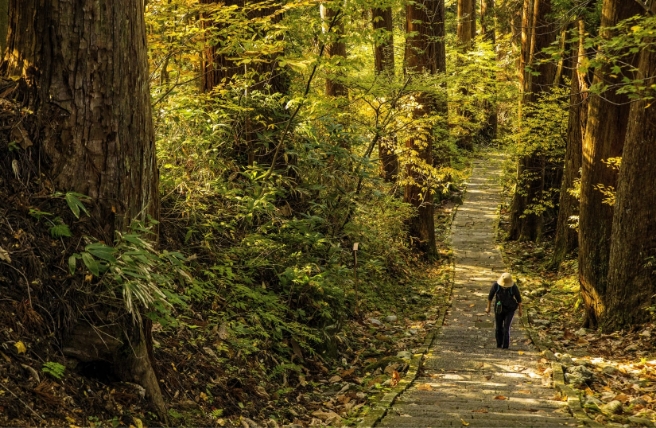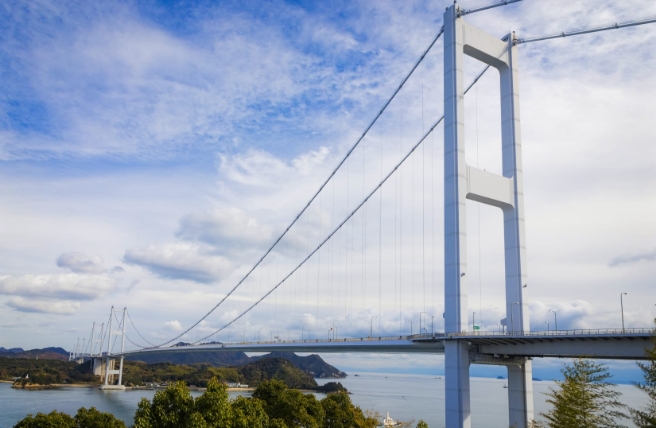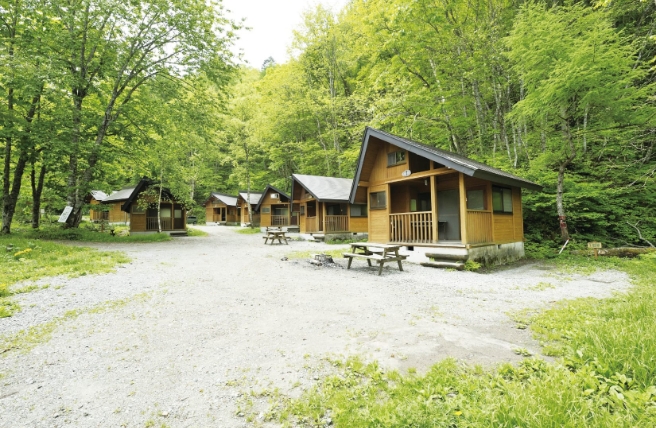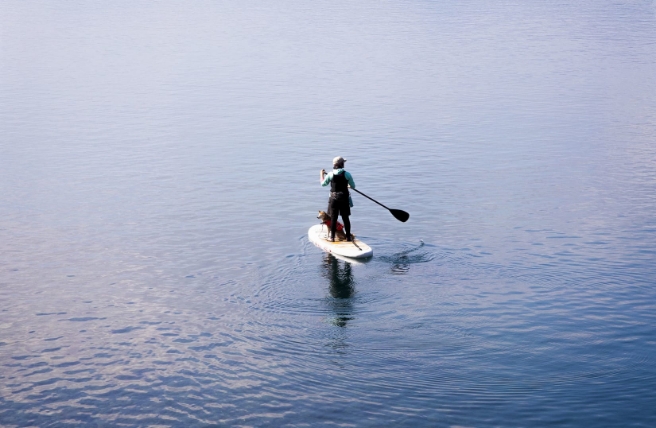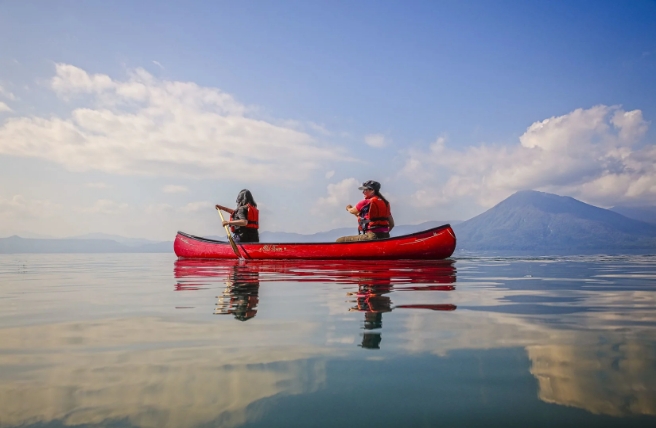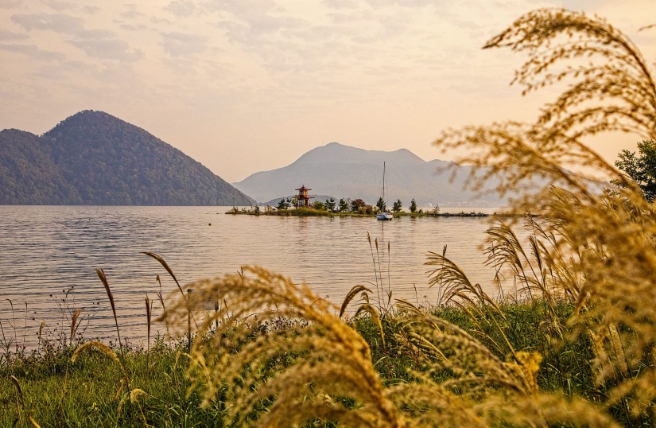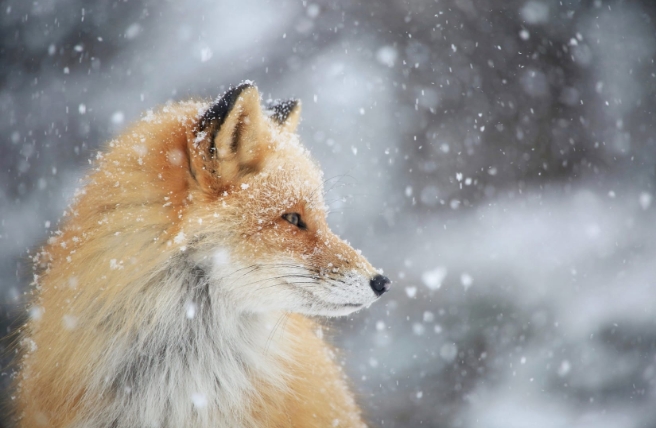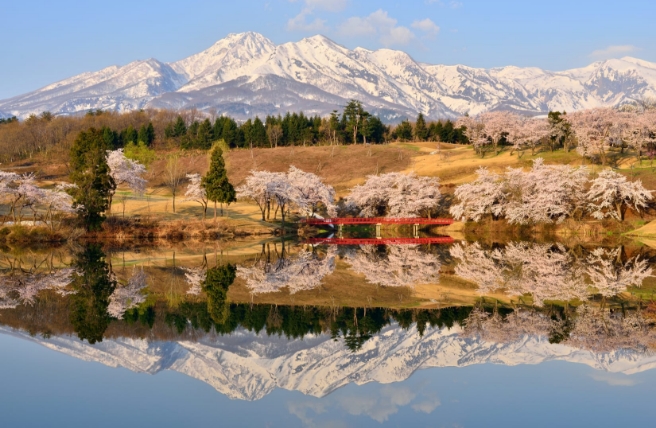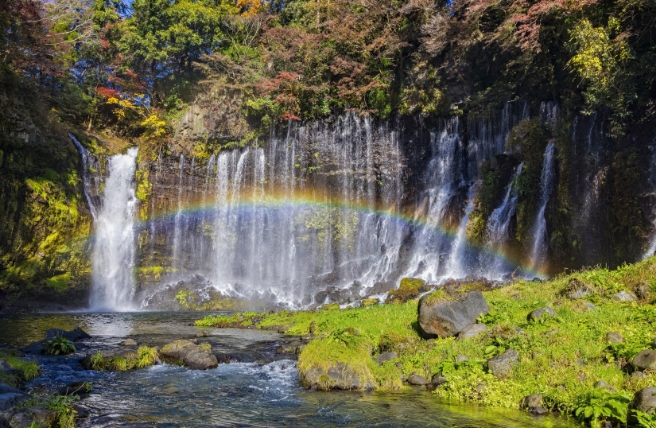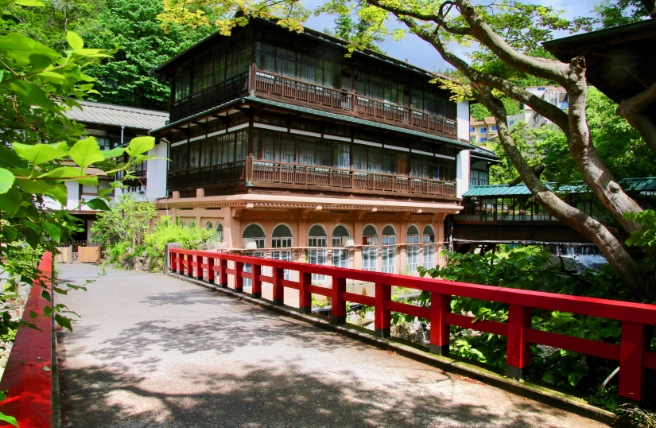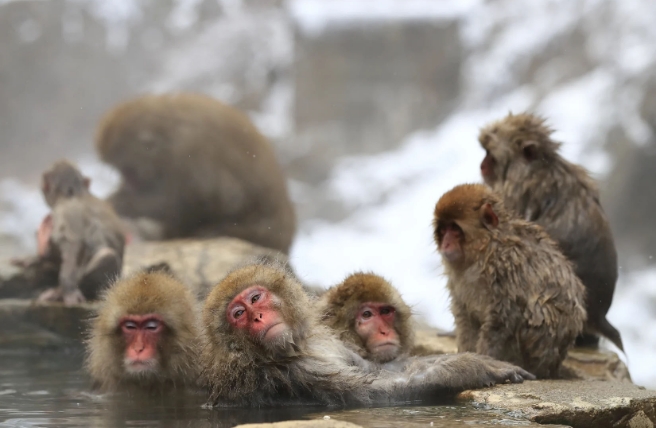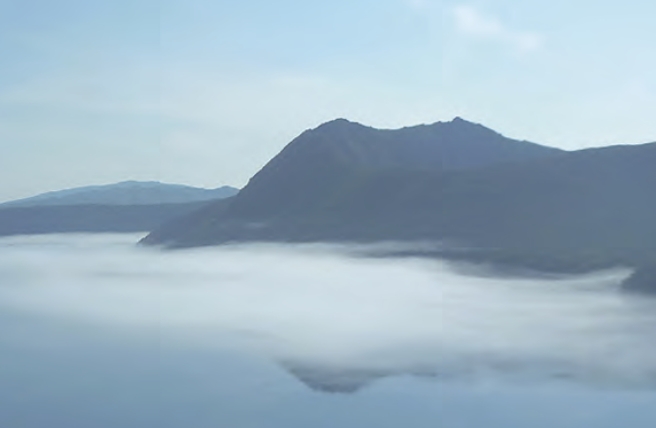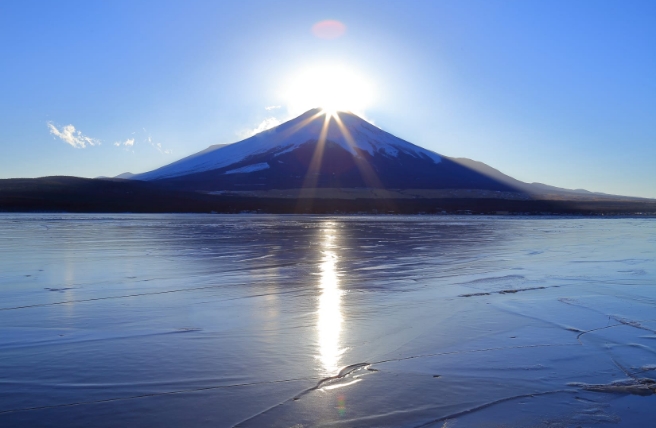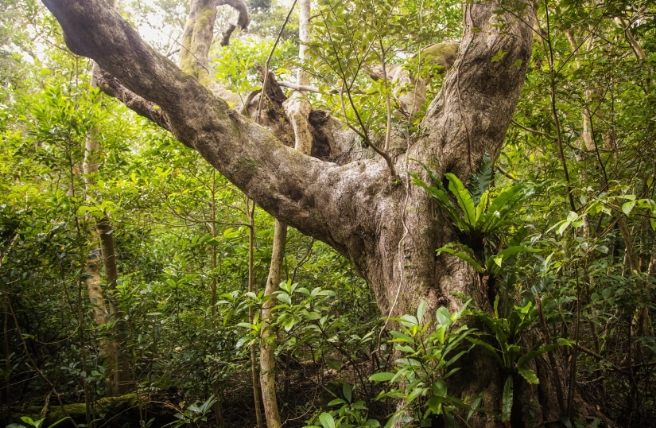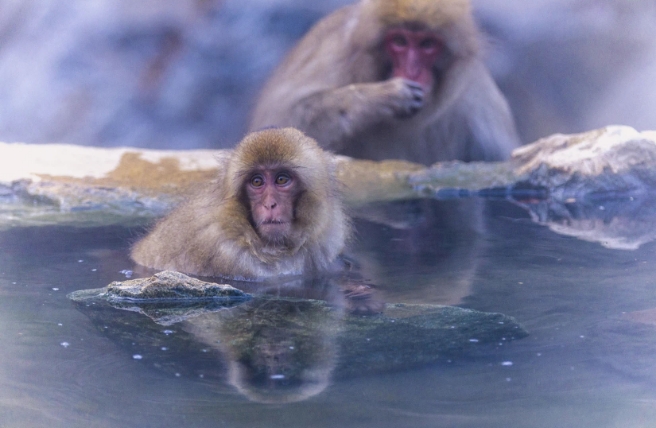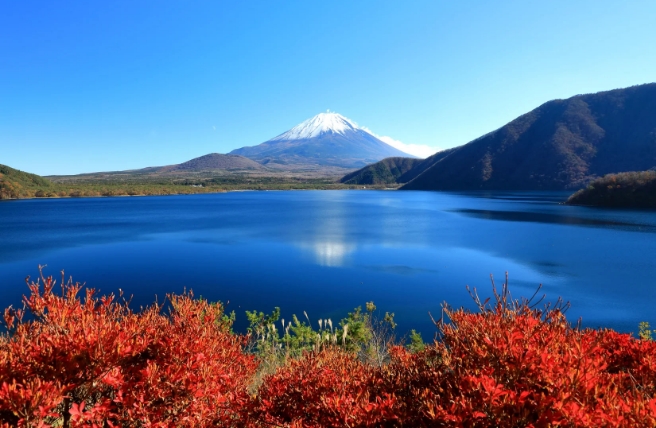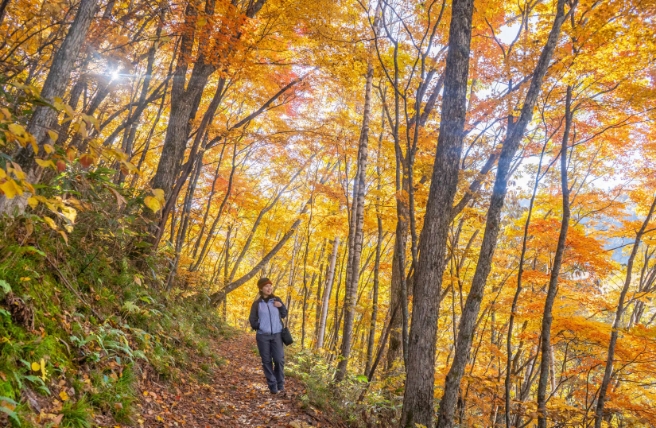
Dorokyo Gorge in Yoshino-Kumano National Park
Spring Flowers
A springtime visit offers the chance to enjoy Japan's iconic cherry blossoms. Though flowers are often associated with warm weather, you'll most likely need a coat and a warm beverage to enjoy a traditional hanami picnic beneath the blossoms. The cherry-blossom front sweeps from the south of the country to the north, beginning in January in Okinawa and ending in May in Hokkaido. If you arrive too early or late for the cherry-blossom front, you can still enjoy many other beautiful flowers. For example, plum blossoms herald the arrival of spring around February in many parts of the country. Alternatively, you can enjoy a stroll through a wisteria tunnel in full bloom around late April in different parts of the country.

Mount Yoshino in Yoshino-Kumano National Park
The Rainy Season
Japan's rainy season generally lasts from the start of June through mid-July. Don't let the rain put you off, though, since weather conditions at this time tend to be quite comfortable compared to the hot humidity of summer. Rainfall, meanwhile, adds to the mysterious atmosphere in traditionally sacred areas of such parks as Ise-Shima National Park and Yoshino-Kumano National Park.

Osugidani Waterfall, Yoshino-Kumano National Park
Summer—Escape the Heat in the Mountains
Following the rainy season, temperature and humidity levels climb rapidly as the summer heat takes hold. Be sure to wear plenty of sunscreen and stay hydrated to ward off heatstroke. In recent years, lives have been lost due to heatwaves that have climbed over 35 degrees Celsius. However, when climbing mountains like Mount Fuji—which are cold at higher elevations even during summer—be prepared with appropriate warm clothing.
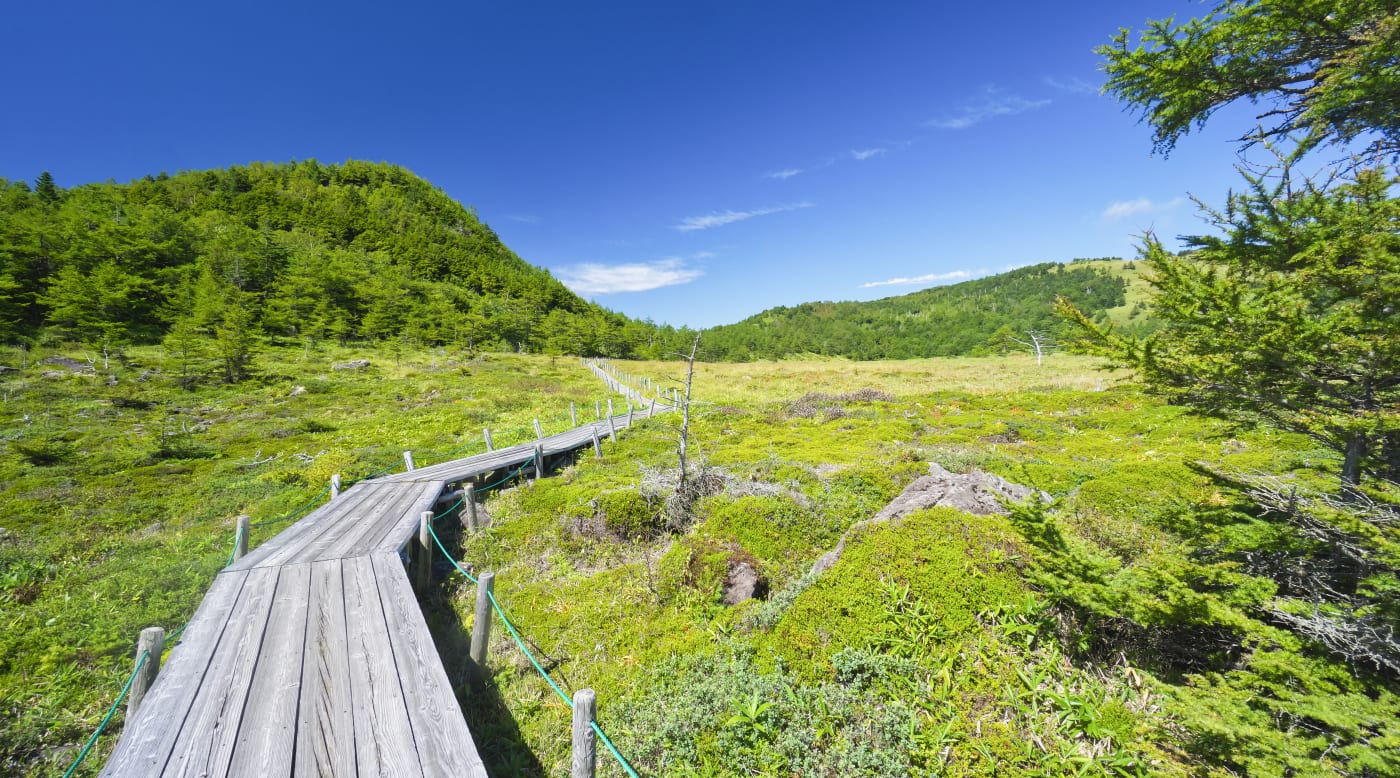
Ikenotaira Marsh, Joshin'etsukogen National Park
Autumn—Glorious Colors After the Typhoons
Japan's typhoon season peaks around August and September. While you can still travel during this period, you should take typhoons seriously and avoid outdoor activities in the parks. Japan's stunning autumn colors emerge as the typhoon season draws to a close. Initially, the leaves begin to change in September in Hokkaido, with the last leaves falling in December in southern parts of the country. This is a golden time for hiking in Japan, but expect crowds in popular areas, particularly on three-day weekends.

Daisetsuzan alpine meadow in autumn, Daisetsuzan National Park
Winter—Get in Gear for Snow Season
Snow generally starts falling in November in northern Hokkaido, Tohoku, and mountainous areas, but truly chilly weather doesn't reach the more southern areas of Japan until December. The ski season begins in many mountainous parks after their hiking trails close for the winter. One of the highlights of skiing in Japan is the chance to take a dip in a natural hot spring after a day on the slopes. An alternative way to warm up is to fly south to Okinawa, where winter temperatures rarely dip below 10 degrees Celsius.
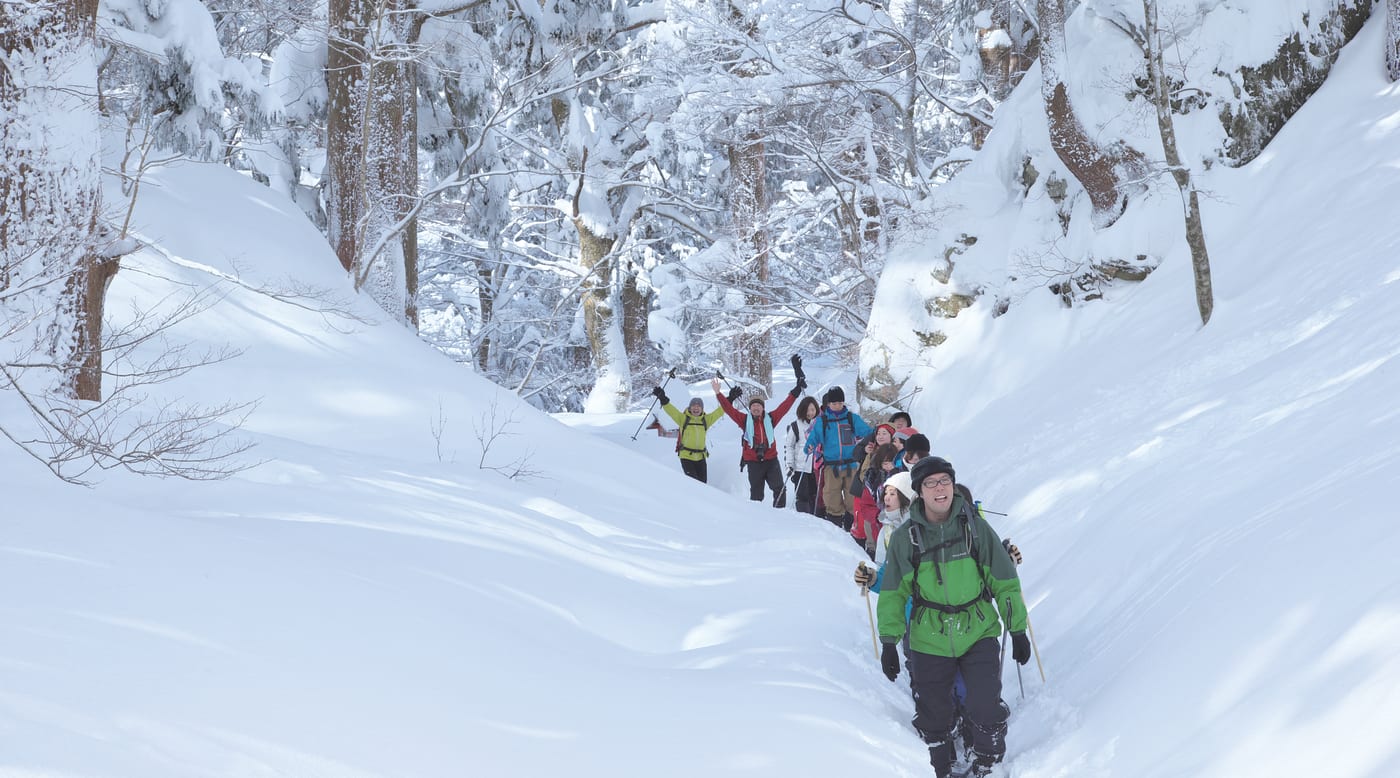
Snow trekking around Mount Daisen in Daisen-Oki National Park
